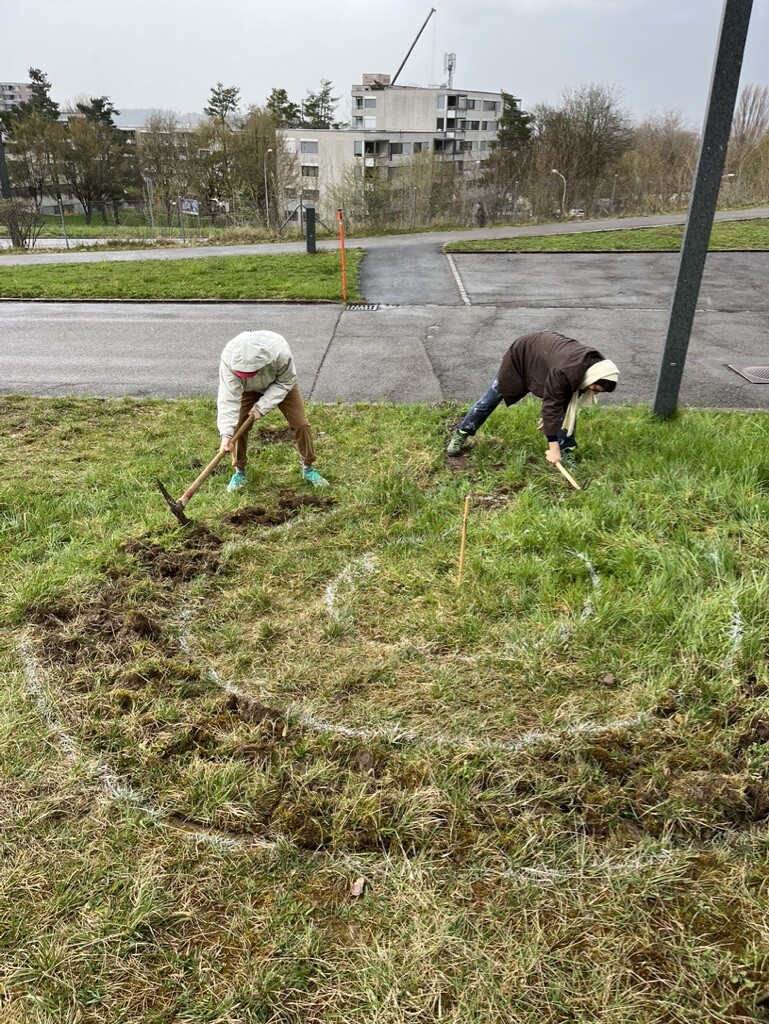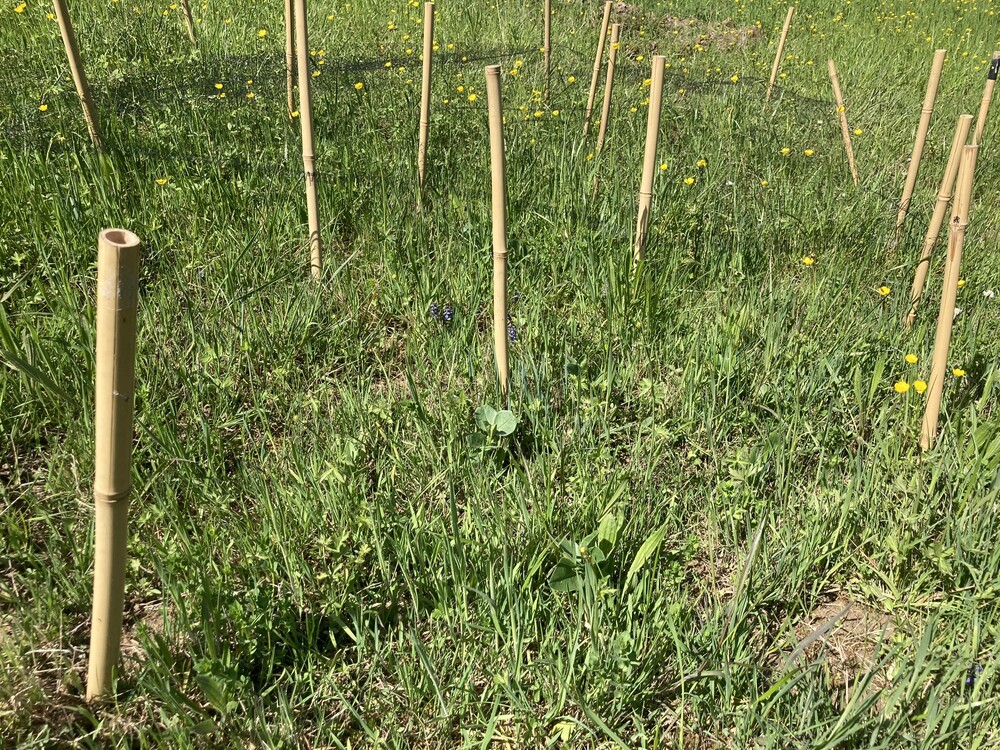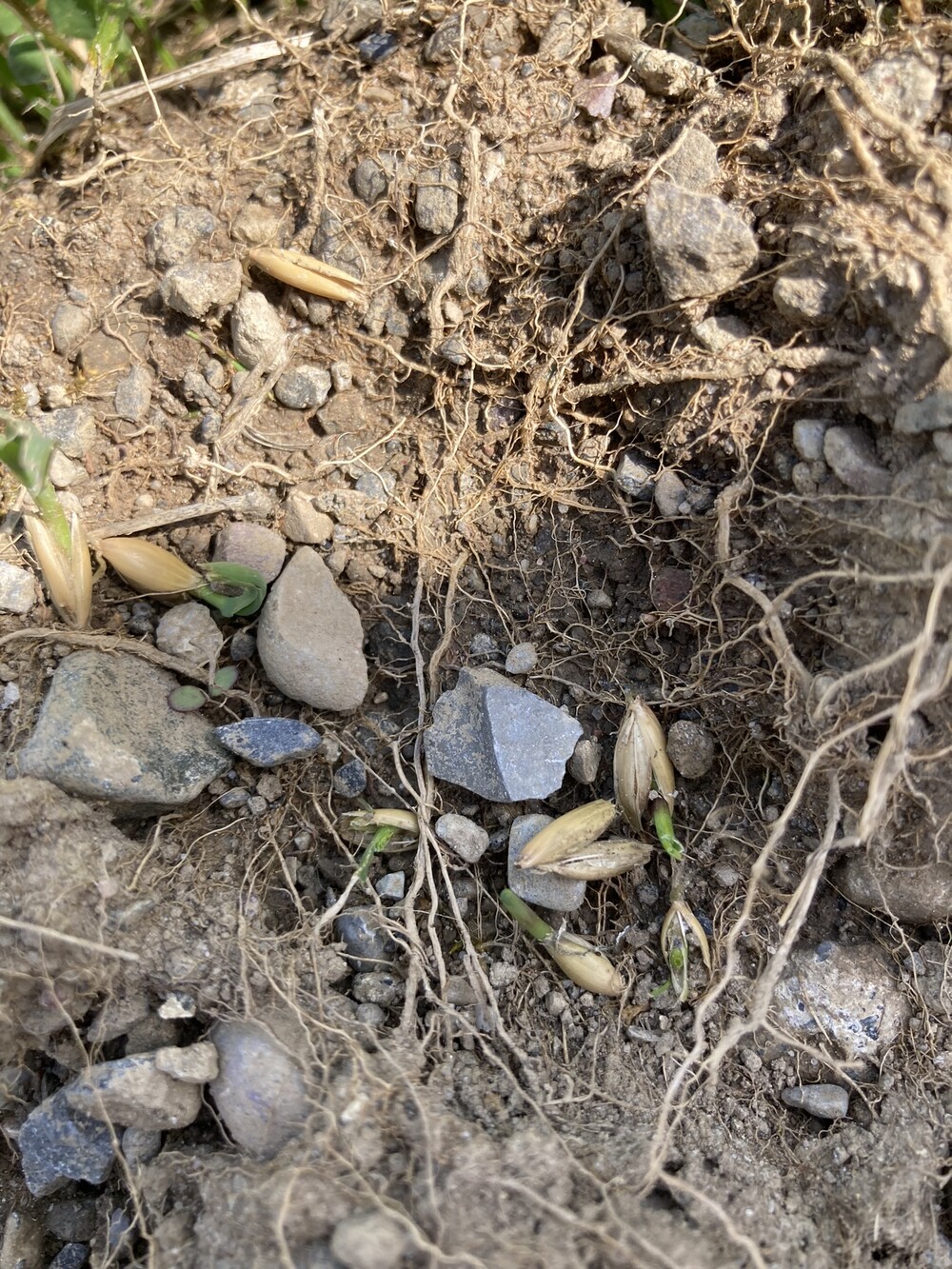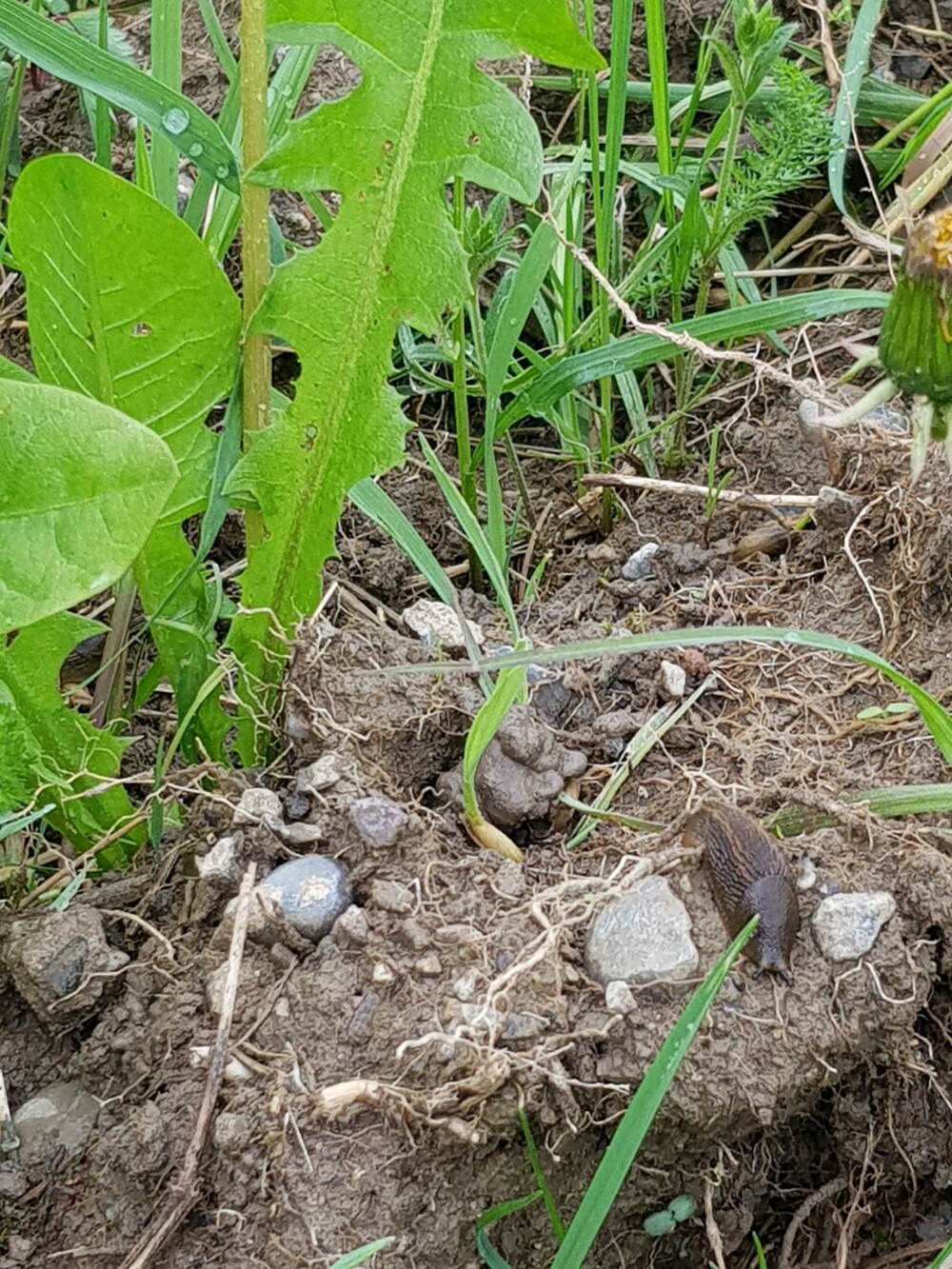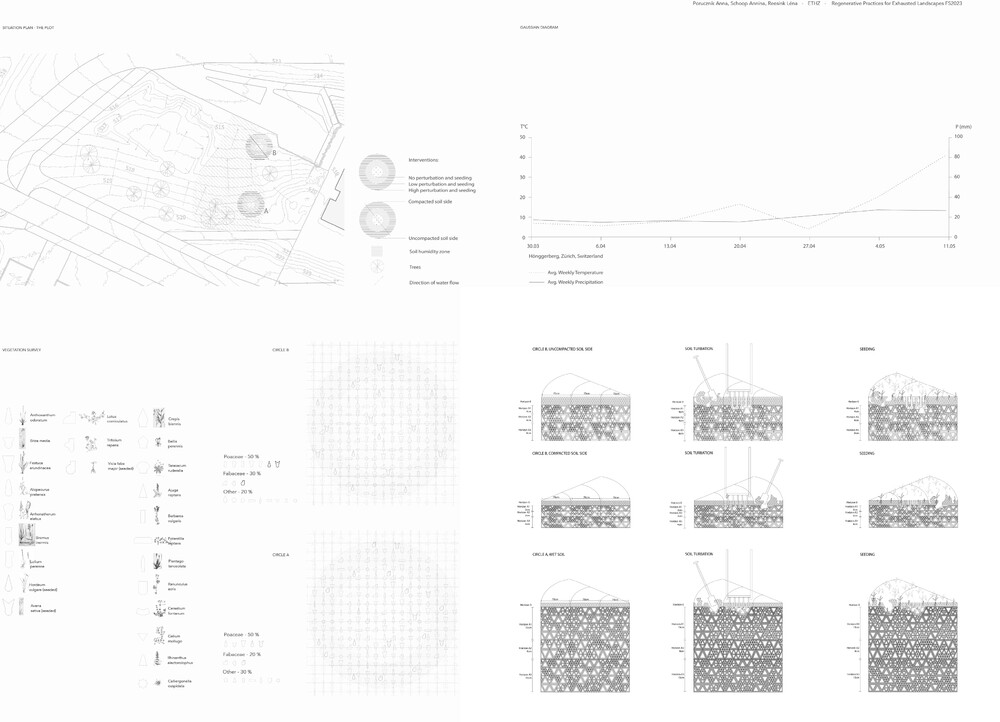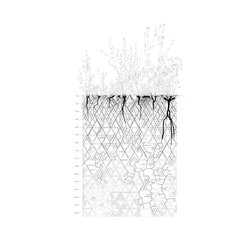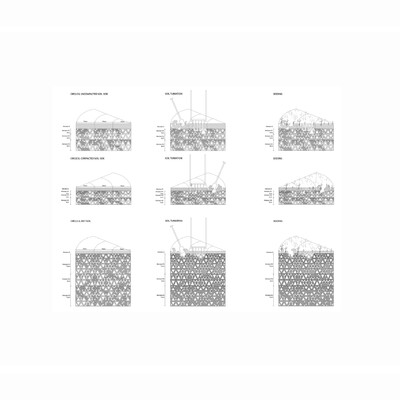
Regenerative Practice: Pasture Cropping
As one of the first interventions in the garden in spring 2023, we experimented with sowing annual crops into a living perennial meadow - a practice known as pasture cropping. On agricultural fields, the existing pasture is usually first grazed or mowed to ensure that the grasses and herbaceous plants are very short. An annual crop such as barley or oats is then sown directly, sometimes with a minimal soil disturbance using the so-called soil kee. The crop grows faster and higher than the existing pasture and outstrips the growth of the grasses. After harvesting, the underlying grasses grow higher and provide perennial cover; the ground never remains bare, the annual plants and the perennial plants alternate. Pasture cropping thus avoids the need to kill off the competing pasture before sowing the crop, leaving a living plant cover on the ground all year long.
Two trial areas, each divided into three zones, were defined for the intervention in our garden. The two trial areas have different soil conditions - one circle is uphill and rather moist, the other downhill and dry. Each circle has three zones that show three degrees of disturbance. The inner core was not disturbed at all, the middle zone was lightly disturbed with holes using a broadfork (the width of the fork of 70 cm defined the width of the individual zones) and the outer zone was heavily disturbed where the topsoil was flipped to expose the roots of existing plants upward. At the upper and wetter location, broad beans (Vicia faba), summer barley (Hordeum vulgare) and summer oats (Avena sativa) were sown. At the lower and drier location, only summer barley (Hordeum vulgare) and summer oats (Avena sativa) were sown.
Photos taken a month after sowing: many seeds have sprouted, but most of the seedlings have been eaten by snails and have not grown.
In the weeks following the intervention, the two areas were observed to assess how the sown seeds adapted and grew in the different disturbance zones. Where the soil was disturbed the most, the crops grew best and reached a height of around 30 cm – independently from the wet or dry area. In the middle zones, they were not able to assert themselves at all against the existing competition. However, it must be said that ultimately no sown crops could really prevail against the existing vegetation. We suspect the reasons for this to be insufficient tillage before the intervention (mowing the grass back very short) and loosening the soil, lack of care during the growing season and snails, which happily ate away the small plants.
